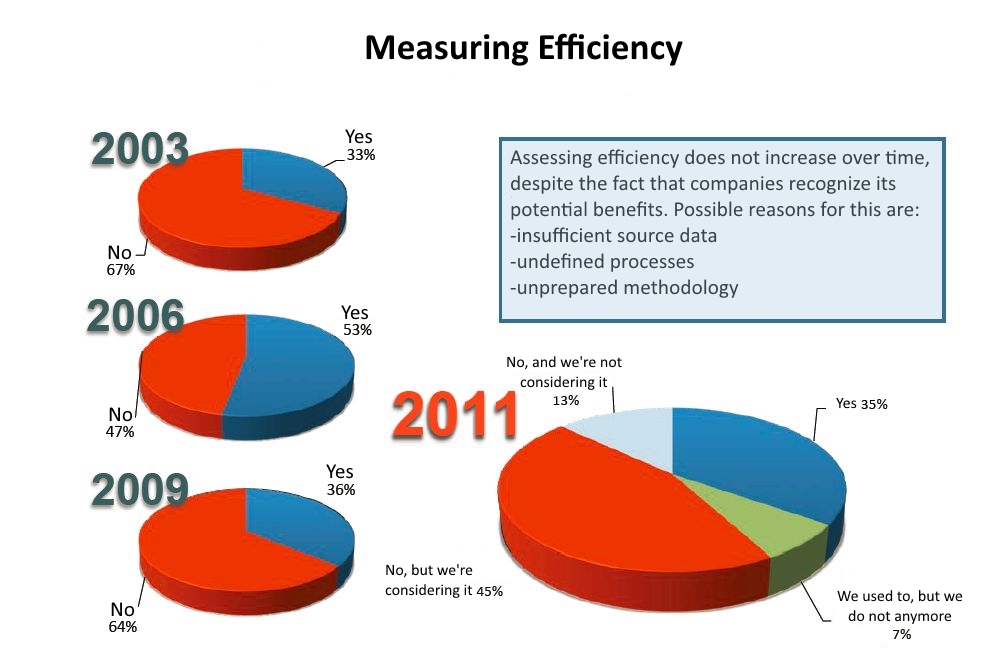5.2. Analysis of Trends in the Environment – SLEPT Analysis
One of the key types of analysis, prior to deciding on a strategy, is identifying and assessing the main trends and changes in the environment which can either positively or adversely impact your company and which should be addressed by your company’s strategy. It is often the company’s inability to notice and adapt to drastic external changes which results in strategy failure.
Since the external environment is relatively complex, the SLEPT analysis suggests identifying significant trends and changes in five areas (de Witt, Meyer, 1994, Johnson, Scholes, 1993):
-
S (social) – society and demographic developments
-
L (legal)
-
E (economic)
-
P (political)
-
T (technological)
As a part of the SLEPT analysis, it is advisable for SMEs to think about, select, and assess in great detail a select few of the most relevant trends which will have to be strategically addressed in the future.
The analysis can be implemented as a team effort by way of controlled discussions between owners and managers, or other employees and external members who could bring something of value to the table (depending on the situation, this could include important suppliers, partners etc.). The company should decide, on the basis of its own expertise and by researching (publicly available) resources, which main trends the strategy should focus on, and furthermore, it should thoroughly assess the potential development and impact of these trend developments on the company in the long term. The discussion should then be directed towards establishing a realistic course of action and time-frame for the company to respond to these main trends.
 Examples from Practice – Significant Trends and Their Impact on Different Types of SMEs
Examples from Practice – Significant Trends and Their Impact on Different Types of SMEs
Social:
-
Over the next few years, private Czech colleges (and others) have to adapt their strategy to accommodate the drastic decrease in potential new high school graduates (demographic development)
-
Many new social trends in the Czech Republic as of the year 2000 – organic food products, focus on the environment, healthy lifestyle etc. unleashed a wide range of business opportunities for SMEs.
-
The problematic reputation of taxi services was the main strategic pillar of smaller taxi companies, whose competitive edge was founded on guaranteeing transparency and honesty to their customers.
Legal:
-
A small company is repeatedly faced with the dilemma that during the tendering process, they laboriously process project proposals for the project owner, certain project owners end up choosing another, cheaper supplier, although they end up using this company’s project. The company then suffers significant losses – on costs invested into the preparation of the project and the unrealized project itself. The strategic analysis identified this situation as a major problem, possible solutions were identified by enforcing copyright law, which the company started to enforce actively during the tendering process in order to ensure that their projects were being protected.
-
A law on children’s groups which came into effect in the autumn of 2014 in the Czech Republic, and which aided in the creation of so-called children’s groups and simpler legal and sanitary conditions compared to those of nursery schools, significantly impacts the competitive nature of companies focused on daily child care.
-
For a small company who has spent the past several years selling bio waste solutions for households, the amendment to the Czech Waste Act, which came into effect in mid-2014, and which strictly stipulates the obligation of municipalities to provide recycling services, serves as a promising opportunity for growth and development.
-
Fluctuations in the exchange rate of the country’s currency have a significant impact on companies who conduct business abroad – for example, currency depreciation delays production inputs which the company purchases abroad. Contrarily, product prices are reduced for exporting companies, strengthening their ability to compete due to low prices.
Political:
-
Political instability in the Czech Republic is one of the reasons behind unclear changes in legislation, delays in passing important bills etc. A typical example is the amendment to the Higher Education Act, which has been the subject of debate for several years now, as legal uncertainty has a particularly negative impact on private universities in the Czech Republic.
-
After the year 2000, a small Czech family company in the agriculture sector decided to expand its activities into one of the regions of the former Soviet Union. As a result, the high level of public corruption and economic criminality, the impact of which the company was unable to foresee, lead to significant strategic losses. This happened despite the fact that the new strategy was implemented in cooperation with a solid Western-European partner, and many other factors indicated that the plan was promising and viable.
Technological:
-
The anticipated future growth of information technology usage in the household is a promising opportunity for companies aimed at information security.
-
Certain retail companies are affected by the influx of online sales and the subsequent changes in consumer behaviour. If these companies fail to address this in their strategy, they may experience a significant drop in sales in the future.
For SMEs, one of the primary sources of information regarding these trends will be information that is publicly available online. It is a good idea to look into the following:
-
Freely available research and analysis for a given sector (advertising studies, which are partially available free of charge, studies conducted by professional associations, chambers etc.)
-
Statistical data on developments in a given sector (statistical offices – national, European, ministries etc.)
-
Other information, i.e. from reputable media outlets etc. (trends, forums etc.)
Example – Measuring a Campaign’s Efficiency as a Competitive Advantage of SMEs
A small company which creates and produces marketing communication tools (POP) utilized information from publicly available research conducted by professional associations as the basis of its strategy. This research revealed that the majority of clients did not measure the efficiency of investments made into marketing support at the point of sale, despite the significant relevance of this information. On the basis of this information, the company then took long-term measures to develop a unique knowledge-based system to support increased efficiency and to measure the efficiency of these communication activities. The system, apart from building the company’s competitive advantages, set a new standard in the given sector (see Figure below).

One of the Conclusions from Publicly Available Industry Analyses (www. popai.cz)


